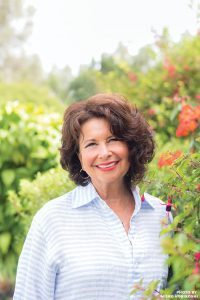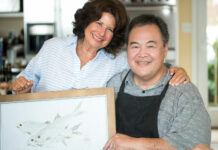 There is a not-so-well-kept secret in Hawai‘i that makes island living nō ka ‘oi (the best): On an island, we need each other.
There is a not-so-well-kept secret in Hawai‘i that makes island living nō ka ‘oi (the best): On an island, we need each other.
“How would you like to come to Hāna with me?” my friend Jill asked. “I’ve got a table at the Hāna Kū fundraiser. We can leave early, enjoy a leisurely drive, and spend the night. It’s not Africa, but it’s always an adventure!”
Less than a month ago, Jill and I, along with a group of close friends, had been on safari in South Africa. We spent nearly three weeks in a world so far away, it took more than three days of planes, trains and automobiles just to get there. Hāna, although a white-knuckle drive, is less than two hours away. And having just experienced Hāna Kū—if only vicariously—in Lehia Apana’s story “Sustaining Culture” (MNKO July/August issue), how could I say no?
As promised, Jill appeared in her SUV on the appointed Saturday. “We’ll take the back way,” she smiled, and helped me lug my travel gear into that beast of a car.
Just as Africa lies on the opposite side of the globe from Hawai‘i, so Hāna sits on the opposite side of the mountain from our perch in Kula. That mountain, Haleakalā, comprises most of the landmass of Maui. And the “back way,” although no shorter, offers a road less traveled.
Despite the prediction for rain, it was a gorgeous day. Sunlight spilled through the lovely old growth of ‘Ulupalakua’s legendary tree-lined road. Every so often, an opening in the canopy afforded a glimpse of the distant, cobalt-blue ocean. It wasn’t long, however, before green gave way to the golden landscape of Kahikinui. “Look at the grass,” Jill said admiringly. “It’s just like Africa.” And indeed it was.
Kukuyu, the favored grass of the semiarid and open lands that stretch along Haleakalā’s leeward slopes to Kahikinui, is the same grass that covers the vast savannahs of Africa. The trees, too, are similar: acacia and ironwood, brush and random succulents in full bloom. Even protea, South Africa’s national flower, grows like a weed in my own backyard. I nod in surprised recognition. “Here we are, on a dot in the middle of the Pacific, and yet one so remarkably similar to a continent halfway around the world.”
But similar only for the moment. In the blink of an eye, the arid terrain morphs to green again as our vehicle trundles into the bamboo forests and past verdant, waterfall-ribboned cliffs of Kīpahulu. (You can savor that experience in Judy Edwards’s adventure story “This Way to the Waterfall,” page 36.)
As soon as we pull up to Jill’s little Hāna cottage, the smell of plumeria and ginger sweetens the thickened air. We rest, talk story, and choose mu‘umu‘u for the Old Hawai‘i-themed festivities ahead. At Hāna Kū, master chefs are all smiles as they present their creations prepared with aloha from local catch and produce. There are plenty of hugs, smiles, friendship, authentic Hawaiian music and hula to go around, as well. “This is what I love about Hāna,” Jill observes with pride, “community.” With a mouth too full to comment, I nod again, and once again find myself comparing our gathering here to the ones we wove memories out of in Africa.
My favorite camp was the Okavango Delta Lodge in Botswana. Not just because of the beauty, but because the folks there made us feel like family. On our last evening, we shared a sumptuous meal, followed by impromptu, joyous song and dance performed by staff. Before I knew it, our guide, Derrin, had pulled me into the group, where I did the best I could to keep in step, delighted to share in the jubilation.
Later, I asked Derrin, a well-educated young man who spoke perfect English, “Would you ever leave Botswana?” “No,” he answered with an easy smile, “Even though my immediate family is small, my family of Botswana is very large. If I need help, there is always someone to lend a hand. If my friend needs me, I am here for him.”
Half a world away, I recall that connection—that what is most remarkable is not how we differ, but how we are the same. On an island, we need each other.
Earth is an island.
Diane Haynes Woodburn Publisher




